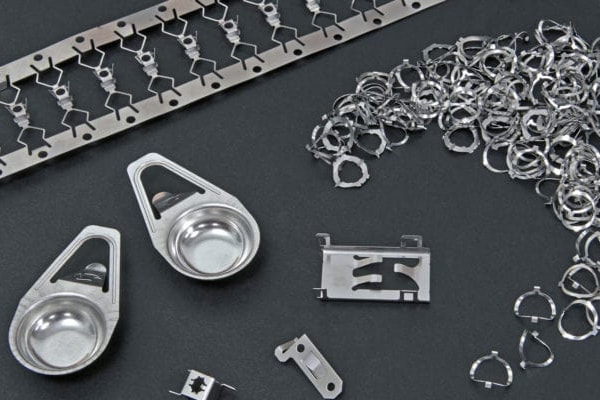What Is Stamping Simulation Technology?
Sheet metal engineering is constantly evolving.
A far cry from its ancient origins, today’s metalwork must keep up with the demands of extremely fast-paced and cutting-edge technological advancements – particularly in the innovative medical device market.
Stamping simulation software makes the creation of complex stamped component designs, resulting in parts that are both higher quality and more economical than ever.
By using a stamping simulator to determine the correct blank shape and size for stamped metal parts, the need for trial and error at the tooling development stage is removed. Rather, the forming of sheet metal is digitally modelled, while describing the real process as accurately as possible to produce realistic results.
A design engineer can confident in the component manufacturing sucess by carefully simulating the effects of the pressing process on the cmaterial, highlighting any flaws that could cause tears and wrinkles in the sheet metal.
Stamping simulation technology catches these flaws before they ever reach a ‘real’ production line, preventing costly delays. Simulation will adjust, develop and determine the correct blank and trim profiles from within the software, allowing even the most complex component surfaces to be generated with far greater ease.
What Are The Benefits Of Stamping Simulation Technology To Medical Device Component Design?

The greatest benefit of stamping simulation technology is the potential for much quicker developmentof intricate medical device components with fewer errors.
If several alternative concepts are being considered, the software can allow for quick reviews of each, without the need for arduous and potentially wasteful prototyping. Similarly, the simulation will often reveal quality and cost improvements which can be incorporated into the design during the very early stages.
The process of getting a new medical device approved and on the market is notoriously long. Stamping simulation technology makes the initial design phase of device components far quicker, with the resulting tooling being considerably more reliable during production.
By producing technically accurate and reliable early phase components, clinicians can test device parts with a realistic look and feel. Similarly, this process ensures a ‘right first time’ approach to prototyping, thus reducing the waste, cost and delays associated with miscalculations.
Can Stamping Simulation Technology Assist With Small And Intricate Medical Device Components?
The benefits of stamping simulation technology are available to any size sheet metal product and is particularly useful when performing the blank development process
As accurate prototypes are so much quicker to produce with simulation technology, it lends itself particularly well to high-volume manufacturing of medical device components, including full progression strip designs.
Why Work With Clamason To Produce Your Stamped Metal Medical Device Components?
Our engineers will work with your team early in the design phase, using advanced stamping simulation technology to produce precision tooling quickly, efficiently and with minimal waste.
We’re ISO13485 and IATF16949 accredited, giving you the assurance that our knowledge and quality of processes will match the specialist needs of your medical devices. Similarly, we have extensive experience with the unique properties of medical-grade metals such as stainless steel, allowing us to make highly effective and low-risk decisions in regard to the design and manufacture of your product.
We also understand how to best clean, handle and package precision metal stampings for the medical industry in our GMP facility, allowing us to provide a single, closed loop system for the entire production cycle of your medical device component.
Ready to find out more? Talk to one of our experts today.
Did you know technical cleaning has usurped passivation in the production of medical device pressings? Find out why.
